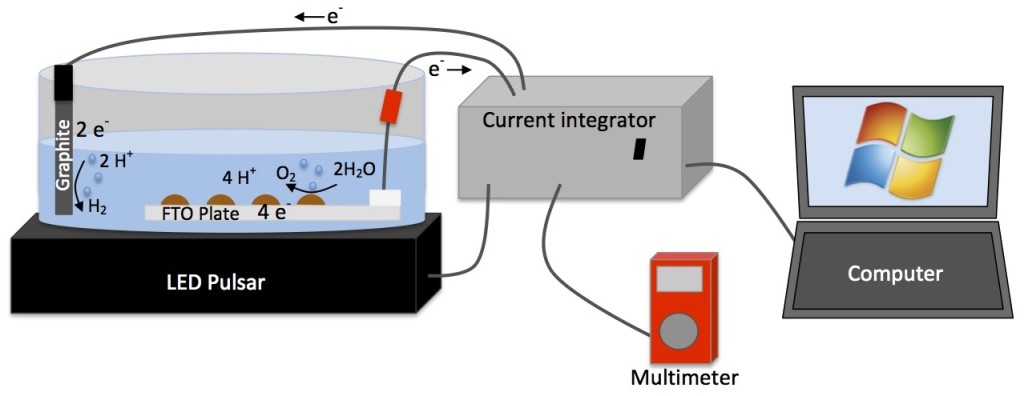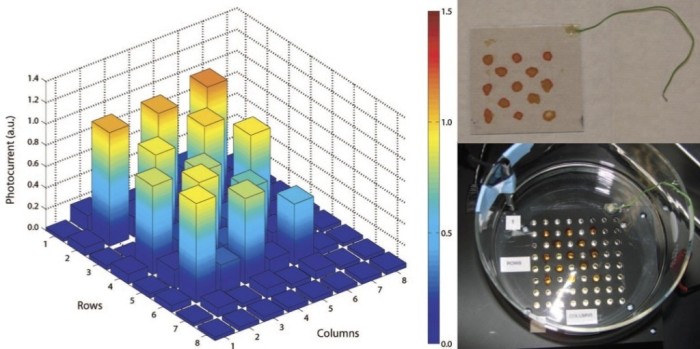Experiment

The goal of the SEAL project is to find a metal oxide material that is cheap, stable, non-toxic, and efficient at converting sunlight into hydrogen fuel. These materials will need to be good light-absorbers and good catalysts for the water oxidation reaction. Energy from sunlight will be absorbed by the metal oxide material, and then using that energy, the material will split water into oxygen gas, protons and electrons. At the counter electrode, the protons and electrons will recombine to form the desired chemical fuel- hydrogen gas.
In the SEAL kit, the LEDs in the pulsar array act as miniature “suns” and can illuminate 64 different materials in a single experimental run. This parallel screening approach allows for efficient screening of the millions of metal oxide materials that could possibly fit the desired criteria. The metal oxides are deposited on a conductive glass plate (glass coated with fluorine-doped tin oxide or FTO glass). The plate is submerged in an electrolyte solution directly on top of the LED array. Upon illumination, the material will catalyze a the water oxidation reaction and release oxygen gas and protons into solution. Electrons released from the reaction flow through the conductive glass and into the current integrator unit. Once the amount of current produced by the water oxidation reaction is measured by the current integrator, the electrons then flow to the graphite counter electrode and combine with the protons in solution to generate hydrogen gas in the proton reduction half reaction.
Overall water splitting reaction: 2H2O –> O2 + 2H2
Water oxidation half-reaction: 2H2O –> O2 + 4H+ + 4e-
Proton reduction half-reaction: 4H+ + 4e- –> 2H2
The SEAL kit is run by the Solar Materials Discovery (SMD) software developed by Jay and Gates Winkler. The current generated by the water oxidation reaction is measured by the current integrator unit and displayed in real time on the computer by the SMD software. The software displays a false color bar graph showing relative amounts of current generated at each of the 64 spots on the plate. A single scan of a plate takes less than a minute and multiple successive scans can be averaged together. The results can then be uploaded to the SEAL database where the entire Solar Army community can learn from the experiment.

